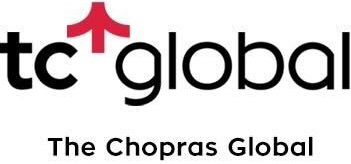Around the world, COVID-19 has put a lot to test. It has questioned our safety nets, health infrastructures, professional patience, body immunity, and now, definitely and silently our most sought careers. The pandemic has brought forth such a strong wave of displacement that even after nearly eight months of its entry in our lives we’ve not been able to make a lot of sense of its long-term impact in our personal or professional lives.
How will it change our daily lives in the future?
How long and to what extent will we deal with the job losses?
How much will university education change in the long run?
What degree will fetch the kind of jobs we want?
Which country will offer the most opportunities in the post-pandemic world?
And most importantly, will the gap between STEM fields and Humanities widen post-COVID?
The gap between STEM and humanities graduates has been a cause for concern since pre-COVID days. According to a study conducted by Emsi, a labour market analytics firm, in 2009-10, the rift between STEM and humanities graduates was negligible. By 2016, undergrads in STEM had increased by 43% while those in humanities had declined by 0.4%.
While one would easily assume that the trend must be continuing in the academic years post 2016 and especially in the COVID era, many university leaders are predicting the contrary. The pandemic has highlighted the need for adaptability, empathy and analytical thinking that will not exclude any groups of people. This need will increase the demand for arts and humanities degrees.
To reason out such thinking it is necessary to understand that the world is currently facing a huge challenge financially and most of the countries are primarily battling with COVID and its added complexities in difficult areas pertaining to that of economic growth, productivity, poverty, and ageing populations. In wake of such an unprecedented situation, many governments may feel more inclined towards prioritizing science and engineering education as a part of the ‘solution’. However, experts have repeatedly pointed out that to solve the complexity of this scale, countries would require well-rounded leaders with analytical and creative thinking that is more associated with arts, humanities, and social science degrees. Therefore, it is not wrong to assume that there is a dire need for the world to eventually move towards the intersection of technical jobs along with the hiring of people who are experts in creativity and empathy, and design.
According to Professor David Garza, rector of Monterrey Institute of Technology, who was a part of the virtual Latin America Universities Summit held in July this year, there will definitely be a need for stronger leadership to deal with the complex problems that have exacerbated in the pandemic. He further said that studies have shown that graduates from humanities and social sciences degrees tend to perform best against a range of leadership skills because of their ability to see a broader scenario. Many Professors at the same summit believed that the world is seeing a potential change in attitudes, habits, and values of young people who are currently at school and may possibly have another way of seeing what is more valuable in the world. Another panellist, Miryam Singer, vice-president for research at the Pontifical Catholic University of Chile, went on to say that the arts will be part of the solution to the pandemic as much as the sciences and technology.
Most of us don’t really see how humanities majors can be a part of the front-line response. Currently, engineers, biologists, and many others in fields with established reputation and experience for translational research have been pushed into action. They seem to be working together to create crucial and life-saving diagnostics and therapeutics to help with the COVID-19 pandemic. Keeping in mind this inter-mix at large, experts from around the world have pointed out that at such a time, the fields of arts and humanities address a very crucial spiritual dimension of human beings and that they enrich societies that cannot only be fed on productivity, entrepreneurship, innovation, and AI. Therefore in a pandemic, when people were in trouble because of lockdown and the drastic financial crash, emotions and humanity became the talk of the town. It is in moments like these when we all witnessed streets covered with art as a form of expression of intense human feelings, emotions, and coping mechanisms. At this juncture, humanities scholars can contribute crucially. For instance, you can engage in research that delves into the humanity, privilege and access aspects of public health and medicine.
According to Paul Hill, founder of Educate to Career, a nonprofit that provides college-planning insights and data to families, an existing trend towards increasing STEM jobs is largely visible for the next three to five years. However, experts believe that in spite of such a trend, it will be too early and certainly not advisable to quit their liberal arts education. Currently, the world urgently needs more mature adults at this stage who understand how different fields interact with each other, interconnect and affect each other, and hence come up with all-round innovative solutions. One way of doing this is not by switching majors just yet, but probably discussing changing the concentration in the major one must have chosen or is bound to choose. For instance, a major in health care may shift to global health. However, even in a critical situation like the current pandemic, experts have most definitely cautioned upcoming graduates from changing majors just to adjust to the expected job market upon graduation.
No matter how grim the job market situation may become, it is still very much the need of the hour to study something that students are interested in and are possibly good at because that will give them the most success and only will maximize their potential. No matter how much change COVID has brought in our lives and career, the basics of our lives and especially our professions still remain the same: choosing a career only because it looks like it will be financially lucrative will possibly only result in a huge disaster. Choose wisely.







